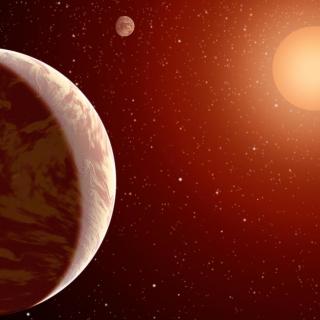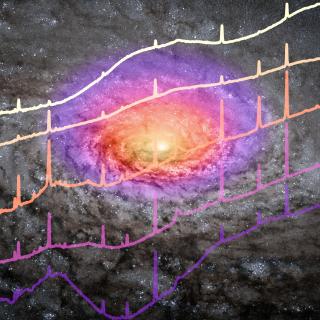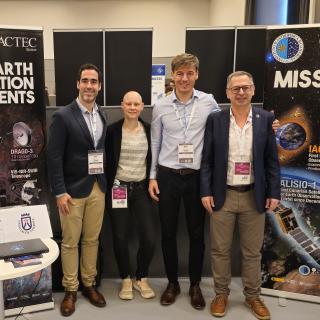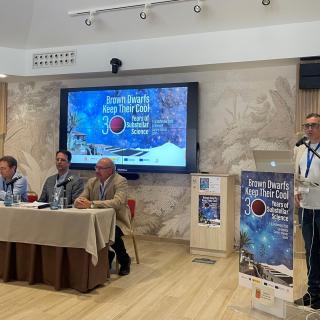An international scientific team, with the participation of the Institutito de Astrofísica de Canarias (IAC), has measured the mass and radius of an Earth-like exoplanet with unprecedented accuracy. The detailed analysis allows to make robust predictions on the structure and composition of its interior and atmosphere. The study is published in the journal Astronomy & Astrophysics.
Since the first exoplanet around a solar-like star, 51 Pegasi b, was discovered in 1995, the astronomical community has continued to find new exoplanets that are less and less massive, closer and closer, and more and more Earth-like.
Recent research, led by the Centro de Astrobiología (CAB, CSIC-INTA), has been able to model the interior and to estimate the relative sizes of the (metallic) core and (rocky) mantle of the exoplanet Gliese 486 b, a hot super-Earth discovered in 2021 orbiting the nearby red dwarf star Gliese 486, just 26 light-years from the Sun.
Thanks to the data carefully obtained with a suite of instruments and space telescopes, such as CHARA, CHEOPS, Hubble Space Telescope, MAROON-X, TESS and CARMENES, the team has also made predictions on the composition of the planet's atmosphere and its detectability with the James Webb Space Telescope, which will soon point its segmented mirror to the planetary system.
"Gliese 486 b has become the Rosetta Stone of exoplanetology" explains José A. Caballero, CAB researcher who led the research. "In the Solar System, we have the terrestrial planets Mercury, Venus, Earth and Mars. Now, the fifth best studied terrestrial planet in the Universe is Gliese 486 b".
For the scientific team, the most important results behind this work are not the values themselves, but the opportunities that they offer to future studies. These include those related to the formation of planetary magnetic fields in the liquid metallic outer core, because Gliese 486 b seems to have one as our Earth. These magnetic fields may act as a shield against the storms originated in the stellar host and prevent the erosion of the atmosphere.
Although Gliese 486 b seems to be too hot to be habitable, because of its precise and accurate characterisation, it may become the first (and only, for the moment) planet where we can formulate relevant questions, such as whether it has a primitive atmosphere made of hydrogen and helium, or whether it is composed of carbon dioxide and water steam from volcanic eruptions, or even whether it has tectonics.
Much of the data used in the study was obtained with the CARMENES spectrograph, mounted at the 3.5 m Calar Alto telescope in Almería (Spain). The consortium of this instrument comprises eleven research institutions in Spain and Germany, including the IAC. Its purpose is to monitor some 350 red dwarf stars for signs of low-mass planets.
The scientists also obtained spectroscopic observations with the MAROON-X at the 8.1 m Gemini North telescope (USA) and with the STIS instrument, onboard the Hubble Space Telescope. Photometric observations to derive the planet's size stem from the ESA's CHEOPS (CHaracterising ExOPlanets Satellite) and NASA's TESS (Transiting Exoplanet Survey Satellite) spacecrafts.
The star's radius was measured with the CHARA (Center for High Angular Resolution Astronomy) array on Mount Wilson, California. A battery of smaller telescopes, including amateur astronomers', was used to determine the star's rotation period.
The study involved the participation of IAC researchers Víctor J. Sánchez Béjar and Enric Pallé.
Artícle: J. A. Caballero et al: “A detailed analysis of the Gl 486 planetary system”, Astronomy & Astrophysics, June 2022. ArXiv: https://arxiv.org/abs/2206.09990
Contact at the IAC:
Víctor J. Sánchez Béjar, victor.bejar [at] iac.es (victor[dot]bejar[at]iac[dot]es)
Enric Pallé. epalle [at] iac.es (epalle[at]iac[dot]es)







